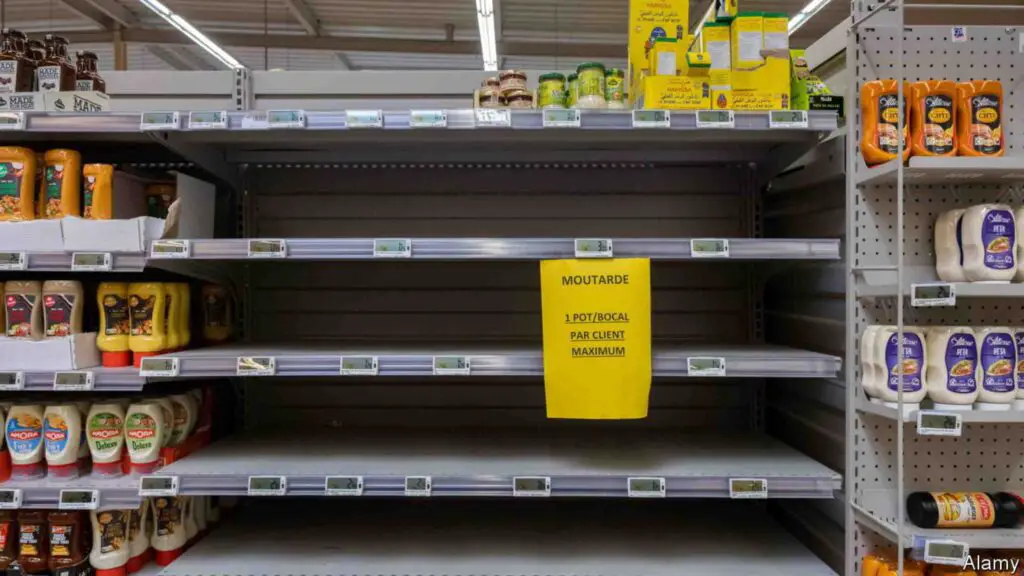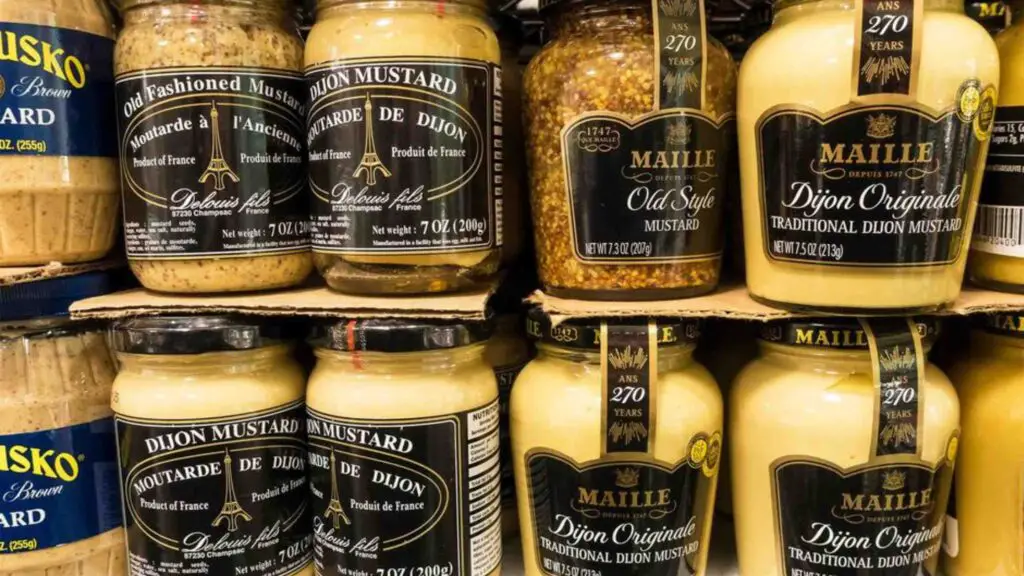French stores are running out of dijon mustard due to climate change and rising prices. These concerns say the scarcity might extend to other nations.
Bad harvests and climate change prevail in France’s Burgundy area and Canada. We know that Canada is the world’s second-largest producer of mustard seeds. French mustard manufacturers reported that seed production in 2021 was down 50% due to these issues.
Dijon mustard, the nation’s favorite condiment, is challenging to find. The few people fortunate enough to find jars in the supermarket are cautioned by warnings that they can only carry one home.
DiscontinuedNews is impartial and independent, and every day, we create distinctive, world-class programs, news, and content that inform, educate and entertain millions of people worldwide.
Why is there a shortage of Dijon mustard?
The severe scarcity that has persisted for months in France is the result of a heatwave in Canada, the world’s leading producer of mustard seeds. Around 80% of the mustard seeds used by the French producers of the hot sauce are imported from Canada. The rest primarily come from Burgundy, the area surrounding Dijon.
But in 2021, a drought reduced the Canadian harvest by half. Now, Burgundy-based French mustard producers want to increase domestic output. It is crucial to expand that share to deal with weather hazards that vary from country to country. This was according to Luc Vandermaesen, head of the Burgundy Mustard Association, an industry body.
Vandermaesen, who also serves as the CEO of Reine de Dijon, the third-largest producer of mustard in France, said: “We can’t put all our eggs in one basket.” Since the Middle Ages, the Dijon region has been known for its mustard seeds. Since the use of chemicals to kill pests was prohibited, bugs have devastated output.
Between 2017 and 2021, production decreased threefold, from 12,000 t to 4,000 t. In June, local farmers were instructed to plant 10,000 hectares with mustard seeds, more than doubling the previous amount.
Dijon mustard shortage 2023

According to Fabrice Genin, president of the Association of Mustard Seed Producers of Burgundy, “the Canadian issues renewed the relevance of the Burgundy sector.” As an incentive, mustard producers decided to pay 2,000 euros ($2,008) per tonne for Burgundy seeds in 2023. It is up from 1,300 euros the previous year and more than twice what they spent in 2021.
According to Jerome Gervais, a mustard specialist at the agricultural chamber in the Cote d’Or region of Burgundy, the appeal has been successful because 10,000 hectares are now slated for mustard seeds. He noted that the number of seed manufacturers increased from 160 to over 500.
A dry spring and an insect infestation destroyed Francois Detain’s farms, and he stopped producing mustard seeds in 2019. Although the cost of fertilizer has increased due to Russia’s invasion of Ukraine, the price paid for mustard seeds enabled him to bring them back.
Additionally, the cost of grains and oilseeds has decreased, which has increased the popularity of mustard seeds. Being able to replant a local crop is “kind of our form of revenge,” according to Detain.
Burgundy seeds have an advantage over those from Canada regarding shipping costs. The shipping costs have increased due to supply chain bottlenecks since the COVID pandemic lockdowns were released.
According to Gervais, Burgundy should produce 15,000 metric tonnes of mustard seeds by the following year, covering 40% of the demand from mustard producers. In October, Vandermaesen predicted that the store shelves should be restocked.
Early in 2023, the scarcity will be totally resolved. “We have a lot of optimism for Christmas.”
Conclusion
The world’s largest mustard consumer is America, where yellow mustard (a mild American-style condiment sometimes served on hot dogs) is most frequently used. The rest of the world calls it “American mustard,” as a result. The seeds of mustard are loaded with vitamins, minerals, and antioxidants.
Around 80% of the mustard seeds used by the French producers of the hot sauce are imported from Canada, with the remainder primarily coming from Burgundy, the area surrounding Dijon. But in 2021, a drought reduced the Canadian harvest by half. Now, Burgundy-based French mustard producers want to increase domestic output.
